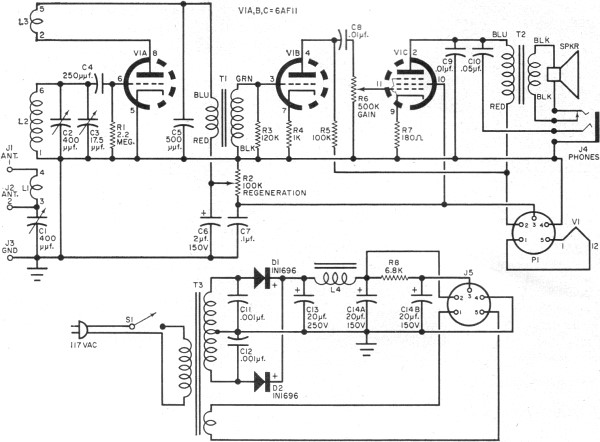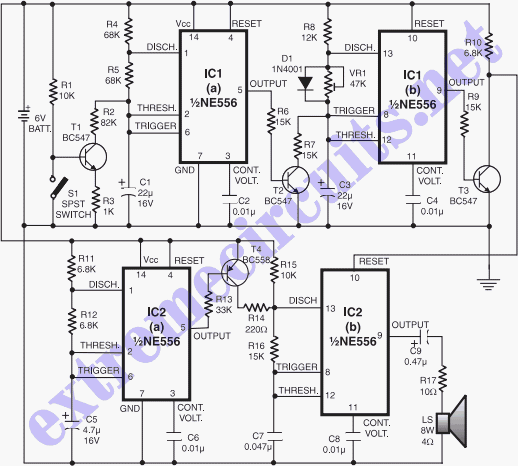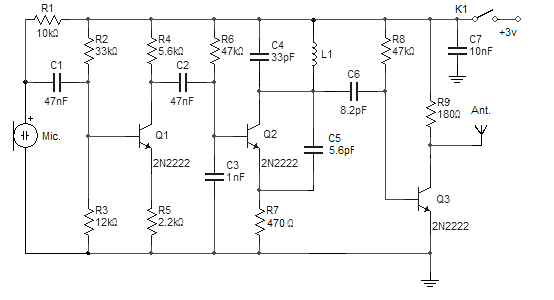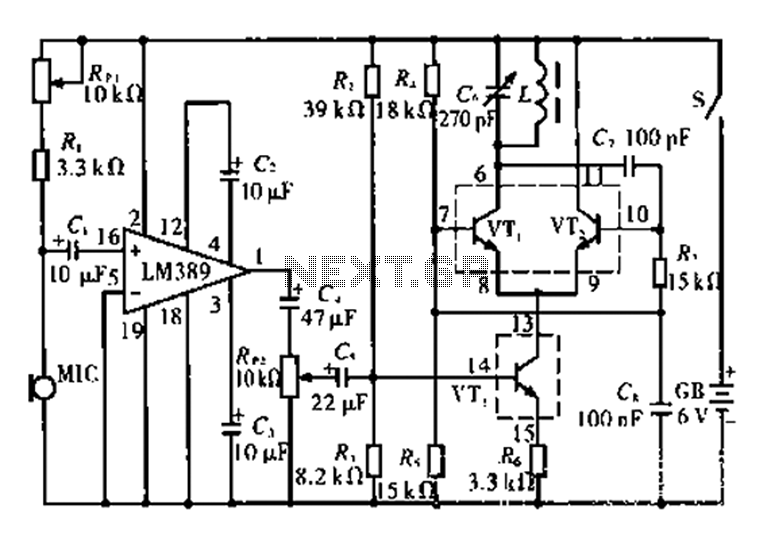
One Receiver

RF Cafe visitor David M. requested the scanning and posting of an article from the January 1963 edition of Popular Electronics, authored by Philip Hatfield from the Receiving Tube Department of General Electric. The article describes a straightforward design utilizing a "compactron" vacuum tube, which consists of two triodes and a pentode. The compactron serves as a vacuum tube equivalent to modern multi-amplifier integrated circuits and remains available for purchase online at a low cost. While contemporary short-wave receivers are sensitive and reliable, they tend to be complex and expensive for beginners. This simple receiver, utilizing one compactron tube, provides long-wave, broadcast-band, and short-wave reception. It is suitable for first-time builders and can complement existing amateur-band receivers by filling in gaps in the spectrum. The compactron enables a compact receiver design, covering frequencies from 250 kHz to 16 MHz, with plug-in coils allowing for extended range. The circuit includes ample headphone volume, and many signals can drive the built-in speaker effectively. The 6AF11 compactron features two triodes and a pentode, with one triode acting as a regenerative detector, the second as an audio voltage amplifier, and the pentode serving as an audio power amplifier. The frequency range is determined by plug-in coils with primary (L1), secondary (L2), and tickler (L3) windings. Tuning is facilitated by a large variable capacitor (C2) for broad frequency coverage, complemented by a smaller variable capacitor (C3) for fine tuning. The antenna coupling circuit is designed for adaptability, allowing various configurations through jacks J1, J2, and J3, enhancing selectivity and mitigating dead spots common in regenerative receivers. Maximum audio output is achieved by operating headphones from the pentode section of the compactron, with the phone jack (J4) disconnecting the speaker during headphone use. The receiver's components, except for the spare-coil rack and coil-changing trap door, are mounted on the chassis box, forming the front panel and sides, ensuring accessibility for builders. The chassis is a flat plate secured with angle brackets, minimizing sheet metal bending. All mounting holes should be cut before securing the plate, allowing for easy assembly and wiring of components.
The described receiver circuit is an exemplary project for electronics enthusiasts, particularly those interested in vintage technology. The use of the 6AF11 compactron vacuum tube is significant, as it integrates multiple amplification stages into a single package, simplifying the overall design. The regenerative detector configuration enhances sensitivity, allowing the receiver to pick up weaker signals effectively. The audio amplification stages ensure that the output is strong enough to drive both headphones and a speaker, providing flexibility in listening options.
The incorporation of plug-in coils facilitates easy frequency adjustments, allowing the user to adapt the receiver for different bands without extensive rewiring. The variable capacitors (C2 and C3) are essential for achieving precise tuning, which is critical for effective short-wave reception. The design's versatility in antenna coupling enhances the receiver's performance, enabling users to optimize selectivity based on their specific operating environment.
The construction of the receiver emphasizes accessibility, with all components mounted on a chassis that allows for straightforward assembly and troubleshooting. This design choice is advantageous for beginners, as it minimizes the complexity associated with traditional receiver builds. Additionally, the thoughtful layout ensures that all components can be tested before final assembly, reducing the likelihood of errors during the building process.
Overall, this compact receiver design serves as an excellent introduction to the world of radio electronics, combining vintage technology with practical construction techniques. It offers a rewarding project for hobbyists and provides a functional tool for exploring the radio spectrum.RF Cafe visitor David M. wrote to ask that I scan and post this article from the January 1963 edition of Popular Electronics. It is an article written by Philip Hatfield, of the Receiving Tube Department of General Electric that describe a very simple design that uses a " compactron " vacuum tube, which consist of two triodes and a pentode. The compactron was sort of a vacuum tube version of the multi-amplifier integrated circuit of today. They are still available for purchase on eBay for a couple bucks each. MOST of today`s short-wave receivers are truly sensitive and reliable devices, but they are also rather complex and expensive for the beginner to construct. Here`s a simple receiver, using one compactron tube, that will give you long-wave, broadcast-band, and short-wave reception.
If you are considering putting your first receiver together, this one is for you. If you, have an amateur-band-only receiver, this unit will fill in some of the "holes" in the spectrum. Finally, if you already have a general-coverage receiver, this set will make a good "auxiliary" to tuck a way on a corner of the desk just in, case your "big" one quits.
Use of a compactron allows a lot of receiver to be contained in a small box without undue crowding. the frequency range covered is from 250 kc. all the way to 16 mc. ; and, since plug-in coils are used, it`s possible to extend the range in either direction. Plenty of headphone volume is provided, and many signals will operate the built-in speaker in a very satisfactory manner. The Circuit. The 6AF11 compactron contains two triodes and a pentode. One triode is used a regenerative detector, the other as an audio voltage amplifier, and the pentode as an audio power amplifier.
Plug-in coils containing primary (L1), secondary (L2), and tickler (L3) windings determine the frequency range. Tuning is done with a relatively large variable capacitor (C2) to allow covering a wide range of frequencies with a minimum of coils.
For fine tuning, a small variable capacitor (C3) is connected in parallel with the larger one to act as a "vernier. " The antenna coupling circuit is purposely designed for versatility. Straight inductive coupling, series tuning, or parallel tuning are possible, depending on the connections to jacks J1, J2, and J3 (see antenna hookup diagram).
This can be quite helpful in increasing the selectivity of the receiver and in tuning out the "dead spots" that afflict most regenerative receivers. For maximum audio output, the headphones are operated from the pentode section of the compactron, and the phone jack (J4) is arranged to disconnect the speaker when the phones are in use.
The Receiver. All parts of the receiver, with the exception of the spare-coil rack, and the trap door for coil changing, are mounted on the portion of the chassis box used to form the front panel and sides. As the photos show, this makes all parts of the receiver readily accessible to the builder. In addition, since no electrical components are mounted on the removable portion of the box, all the testing that is necessary can be done before the cabinet is "buttoned up.
" To reduce sheet metal bending to a minimum, the chassis proper is a fiat plate, cut to make a fairly snug fit, and then fastened in place with four small angle brackets. All mounting holes should be cut in this plate and the chas sis box before the plate is bolted in place.
After the holes have been drilled, all of the parts should be mounted, since they are all readily accessible for wiring in any sequence. In mounting the 40p. p. f. antenna tuning capacitor (C1), flat washers should be 🔗 External reference
The described receiver circuit is an exemplary project for electronics enthusiasts, particularly those interested in vintage technology. The use of the 6AF11 compactron vacuum tube is significant, as it integrates multiple amplification stages into a single package, simplifying the overall design. The regenerative detector configuration enhances sensitivity, allowing the receiver to pick up weaker signals effectively. The audio amplification stages ensure that the output is strong enough to drive both headphones and a speaker, providing flexibility in listening options.
The incorporation of plug-in coils facilitates easy frequency adjustments, allowing the user to adapt the receiver for different bands without extensive rewiring. The variable capacitors (C2 and C3) are essential for achieving precise tuning, which is critical for effective short-wave reception. The design's versatility in antenna coupling enhances the receiver's performance, enabling users to optimize selectivity based on their specific operating environment.
The construction of the receiver emphasizes accessibility, with all components mounted on a chassis that allows for straightforward assembly and troubleshooting. This design choice is advantageous for beginners, as it minimizes the complexity associated with traditional receiver builds. Additionally, the thoughtful layout ensures that all components can be tested before final assembly, reducing the likelihood of errors during the building process.
Overall, this compact receiver design serves as an excellent introduction to the world of radio electronics, combining vintage technology with practical construction techniques. It offers a rewarding project for hobbyists and provides a functional tool for exploring the radio spectrum.RF Cafe visitor David M. wrote to ask that I scan and post this article from the January 1963 edition of Popular Electronics. It is an article written by Philip Hatfield, of the Receiving Tube Department of General Electric that describe a very simple design that uses a " compactron " vacuum tube, which consist of two triodes and a pentode. The compactron was sort of a vacuum tube version of the multi-amplifier integrated circuit of today. They are still available for purchase on eBay for a couple bucks each. MOST of today`s short-wave receivers are truly sensitive and reliable devices, but they are also rather complex and expensive for the beginner to construct. Here`s a simple receiver, using one compactron tube, that will give you long-wave, broadcast-band, and short-wave reception.
If you are considering putting your first receiver together, this one is for you. If you, have an amateur-band-only receiver, this unit will fill in some of the "holes" in the spectrum. Finally, if you already have a general-coverage receiver, this set will make a good "auxiliary" to tuck a way on a corner of the desk just in, case your "big" one quits.
Use of a compactron allows a lot of receiver to be contained in a small box without undue crowding. the frequency range covered is from 250 kc. all the way to 16 mc. ; and, since plug-in coils are used, it`s possible to extend the range in either direction. Plenty of headphone volume is provided, and many signals will operate the built-in speaker in a very satisfactory manner. The Circuit. The 6AF11 compactron contains two triodes and a pentode. One triode is used a regenerative detector, the other as an audio voltage amplifier, and the pentode as an audio power amplifier.
Plug-in coils containing primary (L1), secondary (L2), and tickler (L3) windings determine the frequency range. Tuning is done with a relatively large variable capacitor (C2) to allow covering a wide range of frequencies with a minimum of coils.
For fine tuning, a small variable capacitor (C3) is connected in parallel with the larger one to act as a "vernier. " The antenna coupling circuit is purposely designed for versatility. Straight inductive coupling, series tuning, or parallel tuning are possible, depending on the connections to jacks J1, J2, and J3 (see antenna hookup diagram).
This can be quite helpful in increasing the selectivity of the receiver and in tuning out the "dead spots" that afflict most regenerative receivers. For maximum audio output, the headphones are operated from the pentode section of the compactron, and the phone jack (J4) is arranged to disconnect the speaker when the phones are in use.
The Receiver. All parts of the receiver, with the exception of the spare-coil rack, and the trap door for coil changing, are mounted on the portion of the chassis box used to form the front panel and sides. As the photos show, this makes all parts of the receiver readily accessible to the builder. In addition, since no electrical components are mounted on the removable portion of the box, all the testing that is necessary can be done before the cabinet is "buttoned up.
" To reduce sheet metal bending to a minimum, the chassis proper is a fiat plate, cut to make a fairly snug fit, and then fastened in place with four small angle brackets. All mounting holes should be cut in this plate and the chas sis box before the plate is bolted in place.
After the holes have been drilled, all of the parts should be mounted, since they are all readily accessible for wiring in any sequence. In mounting the 40p. p. f. antenna tuning capacitor (C1), flat washers should be 🔗 External reference





